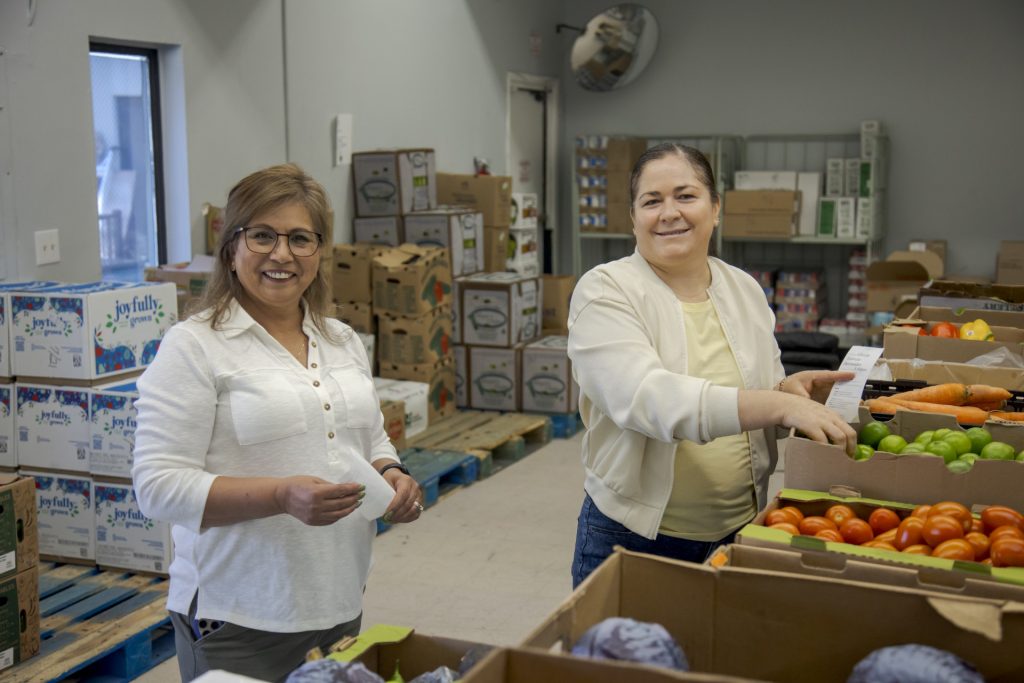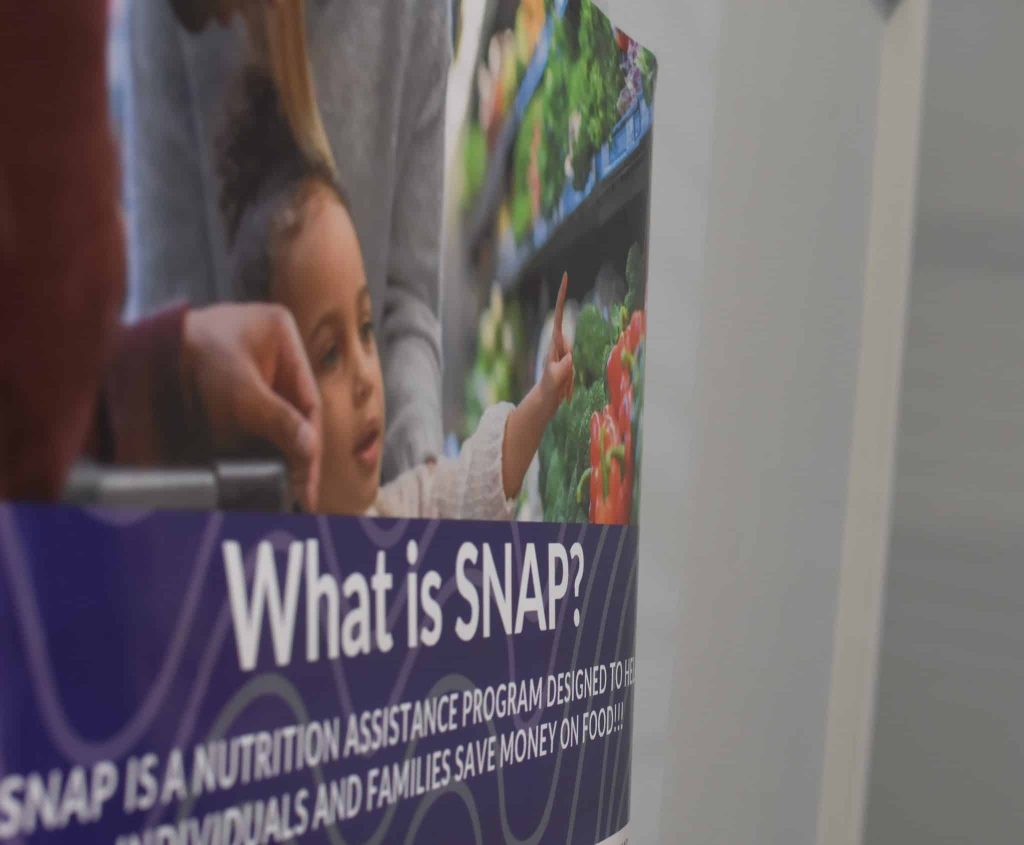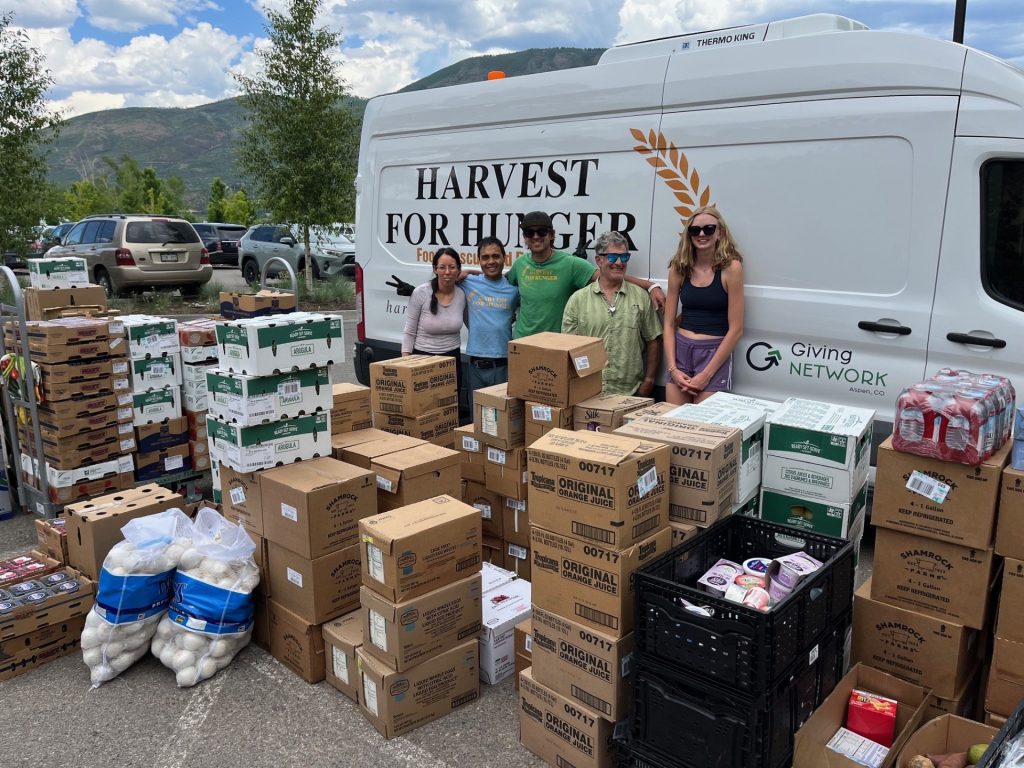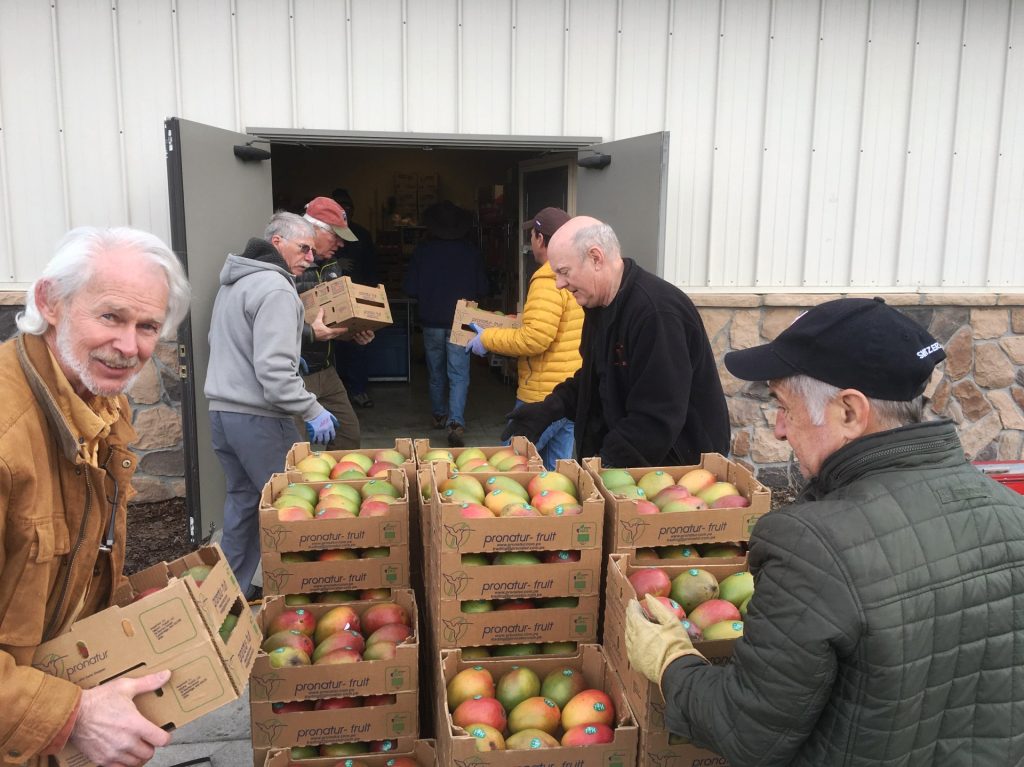Colorado mountain town food banks, facing greater demand and fewer resources, brace for ‘perfect storm’ once SNAP cuts hit
Rural resort areas have seen a surge in hunger since the pandemic. Fewer people on SNAP will put even more pressure on local services, nonprofit leaders say.

Family and Intercultural Resource Center/Courtesy photo
In affluent Summit County, where vacation homes dot the landscape and visitors flock for world-class skiing and mountain town beauty, a local food bank is working harder than ever to feed families.
Since August 2020, the Family and Intercultural Resource Center has recorded a 350% increase in monthly visits to its food pantries, according to Executive Director Brianne Snow. The nonprofit is supplying enough food to feed 625 households per week, based on visitation data.
Demand has only escalated since the COVID-19 pandemic, which exacerbated the already stark income disparities in rural resort communities. And with pandemic-era benefits from the federal government now dried up, nonprofits like Snow’s are trying to meet the need with fewer resources.
“All of a sudden, the gap to afford living here has become really unattainable since COVID, more so than ever before,” Snow said. “People rely on food banks in these towns because that is how they eat.”
Food providers aren’t anticipating any relief soon. If anything, they say the challenge to feed communities will only intensify in the coming years, once changes to the Supplemental Nutrition Assistance Program take effect.
The sweeping domestic policy bill passed this summer by congressional Republicans and signed into law by President Donald Trump overhauls the country’s safety net systems, including SNAP. The measure, which Trump called his “one big, beautiful bill,” increases work requirements for SNAP recipients, limits eligibility, freezes potential benefit increases, and shifts more of the program’s administrative costs to states.
Taken together, the policies are projected to decrease federal spending on SNAP by $186 billion through 2034, according to the Congressional Budget Office.
That could cost Colorado as much as $175 million a year, according to state officials. Most of the SNAP changes are slated to take effect in 2027.
Anti-hunger advocates worry the legislation will lead to fewer people with SNAP benefits, pushing them instead to resource-strapped food banks. That will create what Snow called a “perfect storm.”

Already, Snow’s nonprofit is spending about 30% less on food compared to just a few months ago as it tightens its budget. Federal and state funding changes, unrelated to the “big, beautiful bill,” are projected to reduce funding for the resource center by about $500,000 next year.
“The food markets were designed to fill gaps. This is what I keep telling people,” Snow said. “We’re not designed to replace government programming … so as these safety net programs start to change and these regulations get stricter and people start to fall off, families do start to turn to us, and we have that increased need and decreased funding, and it’s just a recipe for disaster.”
A sustained rise in hunger
Roughly 40,000 people on the Western Slope rely on SNAP, according to Food Bank of the Rockies, which is part of the national Feeding America network.
Most people in Colorado must make under 200% of the federal poverty line to qualify for benefits, which translates to a monthly income of $2,510 for an individual and $5,200 for a family of four.
Anti-hunger advocates say that doesn’t go far in rural resort communities, where wages are typically higher because of the cost of living. While many working people and families may not qualify for SNAP, they still experience financial instability and, often, hunger.
Between 2019 and 2023, the most recent data year available, the food insecurity rate across Colorado jumped significantly, according to Feeding America. Eagle and Garfield counties’ respective rates jumped 66% and 48%. Summit, Grand and Pitkin counties saw rate increases of roughly a quarter.
Melina Valsecia, executive director for the Eagle Valley Community Foundation, said visits to her food pantries have continued to increase since then. The community foundation runs two food pantries in Edwards and Gypsum, and a mobile market that makes stops up and down the Vail Valley.
In 2024, the nonprofit served on average 3,500 individuals per week. This year, it’s serving around 4,500, according to Valsecia.
She attributes that, in part, to the drop in SNAP benefits in early 2023, which reduced some people’s monthly allotment by nearly $100 — part of Congress’ unwinding of pandemic-era benefits. Valsecia’s food banks recorded a 55% increase in visitors once the enhanced SNAP allotments ended. She expects more of the same once additional SNAP changes take effect in 2027.
“We saw a spike in people coming to the food pantry when SNAP was reduced,” Valsecia said. “We are expecting the same situation.”

Colorado overall is experiencing a 10-year high for recorded hunger, with about 1 in 8 considered food insecure, according to Sue Ellen Rodwick, director for Food Bank of the Rockies’ Western Slope division.
That comes as federal and state funding cuts have already trickled down to food providers.
The United States Department of Agriculture cut $1 billion from food assistance programs earlier this year, including $500 million for a program that distributes food purchased by the department to food banks and markets.
Colorado’s legislature this year also cut $1 million for local food bank assistance to help close a $1.2 billion budget deficit.
The funding losses have decreased Food Bank of the Rockies’ food purchases by about 7%, which equates to roughly 14,000 meals per day. The impact is even greater on the Western Slope, which receives more USDA support to get food to rural areas, Rodwick said.
That trickles down to local food banks, which partner with and buy food from the Food Bank of the Rockies.
Once cuts to SNAP kick in, “It means that we’re going to need to rely even more on community support through funding and donations of actual food,” Rodwick said. “We’re still going to be there to meet the needs of our community members, but we’re going to have to work harder in order to be able to do that.”
Leaning on local support
Nonprofit food providers are used to navigating funding challenges with grassroots support, something that will be needed now more than ever, local leaders say.
The Family and Intercultural Resource Center in Summit County, following a years-long, multimillion-dollar fundraising campaign, is planning to move into a new building alongside another nonprofit in early 2026. Snow hopes the move will reduce overhead costs and allow the resource center to reinvest those dollars into programs.
In the Aspen area, a newer nonprofit has been tapping community funding channels to expand its network of food banks.
Harvest for Hunger opened its first food pantry in Snowmass Village less than two years ago, employing a self-service style where anyone can pick up food, no questions asked. It runs another self-service pantry in Aspen, as well as a pantry in Basalt specifically for abused women.
“We have been very busy, but we have not seen the struggle that other organizations that rely on federal funding have,” Executive Director Gray Warr said.

Warr said the group’s funding comes from local governments, the Aspen Skiing Company, and community donations. The nonprofit spends about $1,000 a week to stock its Aspen location alone, which has seen between 1,600 and 1,700 visits per month since opening in June. Warr expects monthly visits could surge to well over 2,000 once ski season starts.
While Warr anticipates the nonprofit will see even greater need in the coming years due to SNAP cuts, he said there’s time for them to prepare. Given how new the group’s food pantries are, and the support they’ve already seen from the community, “I fully expect us to continue to grow,” he said.
Sue Fegelein, executive director for LiftUp Routt County, which runs two food banks in Steamboat Springs and Oak Creek, said her organization would do all it could to avoid cutting back on services in the face of more demand.
LiftUp has operated in the area for nearly 30 years and has built a strong network of partnerships and donors, Fegelein said.
“We’re the go-to basic needs non-profit for our county, and people are passionate about ensuring our neighbors are fed,” Fegelein said. “I have complete faith we’ll be able to weather this.”

Still, the impacts on hunger won’t just be contained to SNAP cuts.
Fegelein said she worries about the compounding effects of the big, beautiful bill’s restrictions on Medicaid and individual marketplace insurance, which are projected to lead to millions of people losing health care coverage over the next decade.
“Your food bill is usually your most manageable bill, and so people can skimp on food or buy the cheapest, most unhealthy food when they have to pay their medical bill, or their insurance bill,” Fegelein said.
“We think that these shifts in costs for medical insurance are going to lead people to have less money to spend on food,” she continued. “All of these changes are going to lead to more people needing to come through our doors, and the people who already use our services needing to get more food items.”
LiftUp has seen similar trends to other food banks, noting a 17% increase last year in both households served and the amount of food distributed. “We’ve just been seeing this increased need, year over year,” Fegelein said.
State pushes tax measure as a solution
Anti-hunger advocates say there’s time to prepare before SNAP benefit changes take effect in 2027.
The state legislature, during a special session in August, amended the language of a statewide tax measure that will go before voters this November in the hope that it will bolster funding for the state’s SNAP program.
The measure, Proposition MM, will ask voters to increase taxes on people making more than $300,000 to boost funding for the state’s Healthy School Meals for All program, which provides free breakfast and lunch for school children. A companion measure, Proposition LL, would let the state retain extra revenue it takes in for the program.
Under the amendment approved by lawmakers, the state would also be able to use that revenue to offset federal funding losses for SNAP.
Rodwick, the Western Slope director for Food Bank of the Rockies, said she hopes the ballot measure is just the start. She said advocates plan to work with lawmakers during the 2026 legislative session to find additional solutions.
And while food pantries will work to fight hunger, their reach can only go so far. Ellen said that for every meal that a food bank provides, SNAP can provide nine.
“The impact of SNAP is huge,” she said.
Valsecia, who runs the food pantries in Eagle County, said she hopes Congress will reevaluate its approach to SNAP. She wants lawmakers to see the program as an economic benefit for local economies, especially rural areas, where stable workforces are needed for the community to thrive.
“The recovery from this will be so hard,” she said. “SNAP is a program proven by research to be an effective way to address food insecurity … (but it) goes beyond just feeding people day-to-day.”

Support Local Journalism

Support Local Journalism
As a Summit Daily News reader, you make our work possible.
Summit Daily is embarking on a multiyear project to digitize its archives going back to 1989 and make them available to the public in partnership with the Colorado Historic Newspapers Collection. The full project is expected to cost about $165,000. All donations made in 2023 will go directly toward this project.
Every contribution, no matter the size, will make a difference.










